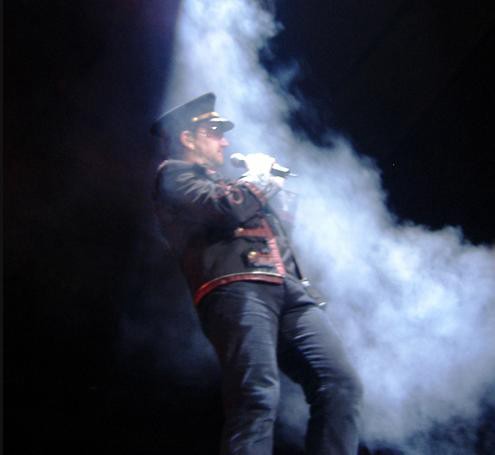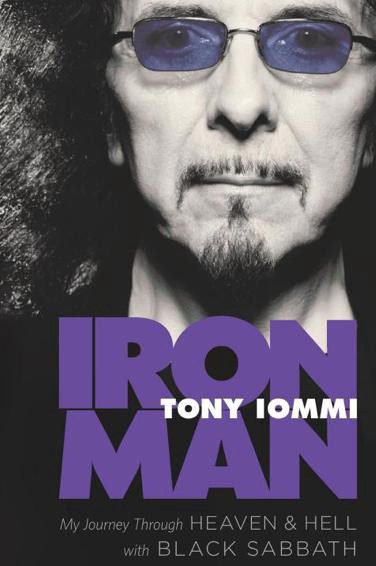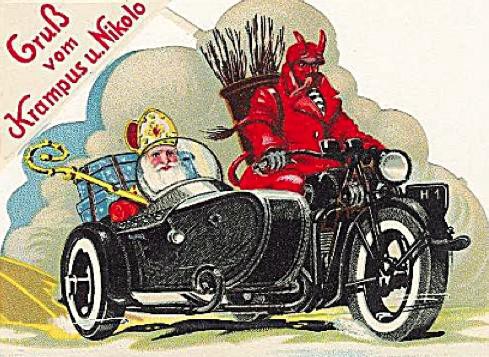20 Years After 'Achtung Baby '
by Elmo Keep

I recently attended a wedding, and it was, as weddings are wont to be, an almost transcendentally beautiful occasion. It was held on the grounds of a giant sandstone Federation house (who can honestly call something with guest quarters off-site a house?) sitting on miles of pristine green acreage. Fairy lights in the shape of love-hearts hung from the trees. The air smelled of freshly cut grass. Butlers stood with umbrellas armed for the possibility of rain to escort you the few feet to the bathrooms. The food was unlike any food I’d ever tasted. The country estate on which is was held, several hours outside of Sydney, was secured by its owners when they outbid Kylie Minogue.
Earlier, as the sun went down, a string quartet struck up at the appearance of the barefoot bride. And because the couple were so young and so filled with hope and optimism, and also because it would have been the dickest move in the world, I could not bring myself to say that the choice of song — U2’s With or Without You — despite its popularity at this exact event and countless thousands of others over the last 25 years, is such a weird choice. A weird, weird choice of wedding song. Because it is, like many other songs written by U2 that would be loosely labelled a “love song,” about a sadomasochistic sexual relationship.
This may cause you some cognitive dissonance if your perception of U2 is one of sexless, God-bothering, self-serious blowhards, or of an increasingly irrelevant U2 cover band (and over the last decade, of the latter you’d be right), kind of like finding out that Bart Simpson is a woman. It’s easy to think of them that way if you only slide down the surface of things.
The sadomasochism began in earnest around the time of “Joshua Tree,” and previous to that their records could be roughly categorised as:
• “Boy” = adolescent fumbling;
• “October” = isolatingly intense spiritual exploration;
• “War” = leftist agitprop (and a record with two genuine love songs);
• “Unforgettable Fire” = unsexy, deliberate European weirdness care of Brian Eno.
After then, all of U2’s anti-love songs were at their core about the absolute, ferocious difficulty of being with another person for the long haul. So maybe, actually, “With or Without You” is the perfect and most honest wedding song choice ever?¹ I should not judge. I am not married. Who knows what goes on in the sex lives of others? Perhaps it’s the line, ‘And you give yourself away,’ that makes so many people choose it for their nuptials.
https://www.youtube.com/watch?v=X0i93JSkYP4
But “With or Without You” is not even subtle in its imagery: it’s all beds of nails and a thorn twisting in a woman’s side, tied hands and bruised bodies, a man left with “nothing to win and nothing left to lose,” (so Bono’s predilection for the rather ham-fisted image goes). It’s up there in its mass misinterpretation with “Born In The USA.” This is not a love song, it’s a song about bondage. And as so often happened with U2’s output, it was easily interpreted as a Christian analogy for the crucifixion. Which I guess, fine? If that suits your motives. Though it’s hard to envisage exactly where the lines, “She makes me wait,” and “You give it all, but I want more,” fit within that line of reasoning.
There’s little elsewhere on “Joshua Tree” to suggest even a shred of romantic hope. The record closes with a dedication to one of the band’s crew who was killed in a motorcycle accident; another song posits itself in the mind of serial killer; another mourns the unburied dead of the Augusto Pinochet regime; another was about Dublin’s lower working class heroin addicts; yet another is told from the viewpoint of a solider in El Salvador and the single which opened the record, “Where The Streets Have No Name” — so rousing a live song that U2 have never dropped it from their set in the two-plus decades since — is about a couple who yearn for oblivion and escape from a place where they’re “still building then burning down love.”
This decidedly uncheery collection of songs made U2 totally, stupidly, inescapably famous for a sound which soared in ways that left writers to describe it quite undescriptively as “widescreen,” (sounding like what, exactly?) It was a sound they would come to find suffocating and so gleefully bulldozed over it four years later with what would go on to be the career-defining “Achtung Baby,” out 20 years ago last month. The anniversary of this has U2 questioning their future and critics reassessing their past. Oh, and a reissue that will set you back $589.
“Everything out there is against the idea of being a couple,” Bono told author and band biographer Bill Flanagan in early 1992. “I’m still in awe of the idea of two people against the world, and I believe it is to be against the world, because I don’t think the world is about sticking together.” It’s interesting to note here that at in early 1992 Bono had been married to his wife — to whom he is still married — for ten years already. But “Achtung Baby” is an opus of acrimony which makes “Joshua Tree” look positively sunny, and was so difficult for the band to produce that they nearly split up in the process.
“Achtung Baby” was a record about the extraordinary lengths to which people will go to psychically wound each other as deeply as possible (“I’m only hanging on to watch you go down, my love.”) While explicitly about the divorce that guitarist Edge was in the middle of at the time, lyrically “Achtung Baby” was, like all things ever written, ever, also about the writer. “I don’t know which came first, to be honest,” Bono told Flanagan in one of the hundreds of interviews the two sat for over the four year course of the recording and touring of “Achtung Baby.” “The words or what Edge went through, they’re all bound up in each other… I’ve had my problems in my relationship, it’s tough for everybody. I think fidelity is just against human nature. It’s where we either engage or don’t engage our higher side.”
The sadomasochistic allusions hit their full stride on “Achtung Baby,” and it would be hard to read lines like, “You can swallow, or you can spit/You can throw it up, or choke on it” as anything other than what they are. “Clockworks and cold steel/fingers too numb to feel,” “Love is Blindness” grinds mechanically. “Head in heaven/fingers in the mire,” Bono sang on “So Cruel,” a song he’d originally written for Roy Orbison. There was “Mysterious Ways”’ incantation to oral sex: “If you want to kiss the sky/Better learn how to kneel.”
Then there was “One,” the song around which the album was built. A song U2 liked so much they made three videos for it. In the years since its release, “One” has been reconfigured inside U2’s considerable mythology as a unification touchstone, when in reality it is — more than any other song of theirs — exceptionally bitter and riddled with sexual dysfunction: “Did I disappoint you/Leave a bad taste in your mouth?” the protagonist asks, though he doesn’t really care. It’s a song saddled now with so much additional baggage (Mary J. Blige?) that you need to listen to Johnny Cash’s barebones cover to glimpse its original intent.
Horribly, “One” — You ask me to enter/But then you make me crawl” — was for a long time the go-to track for emotionally laden newscast montages. It’s central conceit — “We’re one/But we’re not the same” — is not a plea for unity but rather an explicit truth about being in a union: it is going to be hard for two people to make it work, people who “Hurt each other and we do it again.” Still, “One” is U2’s enduring torch song, no small feat for such a fatalistic track which also has no chorus. It’s a pretty great song.
U2 continued to mine this terrifically rich vein of dysfunction through “Zooropa,” another loveless Europop wasteland complete with odes to masturbation, right up until the wonderfully misguided “Pop.” There Bono riffed on another favoured topic: exploring his Oedipal complex on the most giant canvas possible, (“Mother, am I still a child? No one tells me no,”) mixing in a little pre-millennial angst: “Jesus, help me/ I’m alone in this world and a fucked up world it is too.”
Critically panned, U2 have spent every record since “Pop” erasing it from their history and releasing records increasingly indistinguishable from one another, filled with Pollyanna sing-song rhymes (“A mole! Digging in a hole!”) and laden with overreaching pathos which add up to nothing. Perhaps only Bono could have rendered the accidental auto-erotic death of his friend Michael Hutchence as a suicide in ways so insufferably naff and reductive as “You’re stuck in a moment and you can’t get out if it.” Thank you for the tautology lesson. Stuck, and you can’t get out? Amazing.
U2’s most recent tour, 360º, was the highest grossing of any ever staged. And it was literally about nothing other than its own sheer immensity. It was named after the fact it was played in the round. It’s hard to imagine that this was the same band who toured Zoo TV twenty years ago; a tour that was a prescient technological reading of the decade which followed it. It’s harder still to picture the band who subverted the love song with paeans to S&M.
That’s because U2 aren’t the same band. After 35 years, they turned out to be the very thing they set out against as a scrappy bunch of post-punk kids in working class Dublin: the dinosaur supergroup. They now write songs like “Beautiful Day,” ostensibly about the Zen-bliss state of losing all your worldly possessions, which, coming out of their mouths is about as convincing as Mick Jagger singing, “You can’t always get what you want.” (He did; they haven’t.)
U2 seem now to be a band intractable, incapable of taking the sort of risks which were necessary to produce a record like “Achtung Baby”; breaking completely with their past, even if they are better situated than nearly any other band working today to do that again, right now. They could bank it all on a change of scene, just as they found inspiration in Berlin twenty years ago. “I want to go to Vegas,” Bono recently told Interview of where the band might record next. “I think that would be fantastic. I could go to Las Vegas. I’ve got a hairy chest.”
When R.E.M. disbanded in September, Michael Stipe aptly quoted a “wise man” saying, “The skill in attending a party is knowing when to leave.” U2’s quest has always seemed to be for some reason, to be relevant. Not great, or even good. They want to remain relevant, a typically obtuse yardstick to measure oneself by in 2011. But not only are U2 the last ones at the party, they’re the only ones. Tiredly uttering the same phrases to each other, over and over.
¹If it’s possible that up until now you never thought of this song in this way, and it was your wedding song and it is now a little bit ruined for you, I am really incredibly sorry! But do suggest, also, that you take it up with Bono?
Elmo Keep is an Australian writer living in Ballarat, Victoria, though she did recently attempt to interview Vincent D’Onofrio in New York. Photo by “Clancy3434.”
Are You Smarter Than the Smartphone War?
by Awl Sponsors
https://www.youtube.com/watch?v=SBUi1SShPuE
What causes mass hysteria these days? Not doomsday proclamations, not even the latest vampire movie. No, hysterics occur when Apple announces a new iPhone… and it happens, it seems, every six months or so. How can something that’s supposed to be so good need so much improving?
Time to step back from the iPhone 4S hype and go below the surface of the smartphone war. Enter T-Mobile’s 4G Android-Powered smartphones. These bad boys can do just as much and, in some cases, even more than the iPhone 4S. T-Mobile’s HTC Amaze 4G and Samsung Galaxy S II are two 4G smartphones with maximum theoretical download speeds of 42 Mbps (compared to 14.4 Mbps on the iPhone 4S). Not to mention a rocking data plan — two lines at $49.99 each line with unlimited data, talk, and text, including up to 2GB of high-speed data.
T-Mobile’s blazing Samsung Galaxy S II runs on America’s largest 4G network which allows for nearly instant streaming of your favorite content, plus a larger, more vibrant screen than all iPhones, plus Google Voice Search, plus the Qualcomm® Snapdragon™ S3 Processor with a 1.5 GHz dual-core CPU for some serious HD action.
View these stylized smartphone videos fused with humor, animation, old school graphics and some straight-up logic, then spread the word: T-Mobile’s Android-Powered phones don’t just go toe-to-toe with the iPhone 4S, they leave it in the dust.
This is a sponsored post written by T-Mobile.
Trinity

I.
On July 16, 1945, the first atomic bomb test took place in the Tularosa Basin of the Jornada del Muerto desert near Socorro, New Mexico. Just three weeks later, Hiroshima and Nagasaki would be bombed: the only time nuclear weapons have ever been used in war. The test was code-named Trinity, and it forced a radical shift in the way that human beings came to regard their place on earth; from that day onward, for almost seventy years, we’ve lived in the uneasy knowledge that a very few people might gain the power to destroy all civilization — all life, even. The events of this day produced the chief wellspring of every kind of modern-day political and cultural anxiety, cynicism and depression. At that moment, humankind was forced to grow up, whether we knew it or not.
In Surely You’re Joking, Mr. Feynman!, the bongo-playing, safecracking amateur magician and Nobel-prizewinning physicist Richard Feynman recalled his experiences at the Trinity test site. He was twenty-seven years old.
They gave out dark glasses that you could watch it with. Dark glasses! Twenty miles away, you couldn’t see a damn thing through dark glasses. So I figured the only thing that could really hurt your eyes (bright light can never hurt your eyes) is ultraviolet light. I got behind a truck windshield, because the ultraviolet can’t go through glass, so that would be safe, and so I could see the damn thing.
Time comes, and this tremendous flash out there is so bright that I duck, and I see this purple splotch on the floor of the truck. I said, “That’s not it. That’s an after-image.” So I look back up, and I see this white light changing into yellow and then into orange. Clouds form and disappear again — from the compression and expansion of the shock wave.
After the thing went off, there was tremendous excitement at Los Alamos. Everybody had parties, we all ran around. I sat on the end of a jeep and beat drums and so on. But one man, I remember, Bob Wilson, was just sitting there moping.
I said, “What are you moping about?”
He said, “It’s a terrible thing we made.”
For all his brilliance as a raconteur, Feynman leaves a great deal unsaid after that. The end of the subject chapter finds him in New York a short time later, having himself sunk into a terrible and entirely uncharacteristic depression, imagining the nuclear destruction of the city.
How far from here was 34th Street?… All those buildings, all smashed — and so on. And I would go along and I would see people building a bridge, or they’d be making a new road, and I thought, they’re crazy, they just don’t understand, they don’t understand. Why are they making new things? It’s so useless.
But, fortunately, it’s been useless for almost forty years now, hasn’t it? So I’ve been wrong about it being useless making bridges and I’m glad those other people had the sense to go ahead
And there the chapter ends. That a mind so eclectic and wide-ranging should kind of drop the ball at the very moment where some hard-core philosophical or ethical reflections would seem to be in order is a little jarring. Still more so this remark, made just a few pages earlier:
“[The mathematician John] Von Neumann gave me an interesting idea: that you don’t have to be responsible for the world that you’re in. So I have developed a very powerful sense of social irresponsibility as a result of Von Neumann’s advice. It’s made me a very happy man ever since.”
Feynman’s first memoir gives great care and attention to the idea of scientific integrity, to publishing whatever results we get, to “the truth” whatever it is, wherever we may find it and wherever it leads. The subject of moral responsibility, he barely glances at. But he would change his tune substantially, and only a few years later, perhaps in the wake of his work with NASA to discover and report the causes of the Challenger disaster. Feynman concluded his second memoir, What Do You Care What Other People Think?, with a lecture he first gave at Caltech in 1955, which contains a most thoughtful analysis of scientific ethics.
We are all sad when we think of the wondrous potentialities human beings seem to have, as contrasted with their small accomplishments. Again and again people have thought that we could do much better. Those of the past saw in the nightmare of their times a dream for the future. We, of their future, see that their dreams, in certain ways surpassed, have in many ways remained dreams. The hopes for the future today are, in good share, those of yesterday.
It was once thought that the possibilities people had were not developed because most of the people were ignorant. With universal education, could all men be Voltaires? Bad can be taught at least as efficiently as good. Education is a strong force, but for either good or evil. […]
Clearly, peace is a great force — as are sobriety, material power, communication, education, honesty, and the ideals of many dreamers. We have more of these forces to control than did the ancients. And maybe we are doing a little better than most of them could do. But what we ought to be able to do seems gigantic compared with our confused accomplishments.
Why is this? Why can’t we conquer ourselves?
It’s characteristic of Feynman that he seems content just to ask the question, let it hang there. This gives rise to the possibility that just the fact of the question might be teaching us more than any provisional answer could.
II.
Last week, an article by Alan P. Lightman appeared in Harper’s called “The accidental universe: Science’s crisis of faith.” Lightman is a physics prof at MIT, and also a novelist. He does a fantastic job of describing the cosmological freakout of modern physicists on being confronted with the possibility that our universe is only one among many, part of a “multiverse.”
Dramatic developments in cosmological findings and thought have led some of the world’s premier physicists to propose that our universe is only one of an enormous number of universes with wildly varying properties, and that some of the most basic features of our particular universe are indeed mere accidents — a random throw of the cosmic dice. In which case, there is no hope of ever explaining our universe’s features in terms of fundamental causes and principles.
This evidently makes a lot of physicists very sad, I guess particularly those who (unsatisfied with “42”) had hoped to witness the discovery of a definitive answer to Life, The Universe, and Everything. They are weeping like Alexander not because there were no worlds left to conquer, but because there are too many, an infinity-dwarfing number.
But maybe what we are coming to understand that the whole idea of “answers” is just lame, that we’ve been barking up the wrong tree entirely. Maybe we can face our uncertain future mindfully, like grownups. And even take some delight in the incalculable depth of the mystery of it. Of us.
It’s not the first time that the physicists have had to start over on a new basis of understanding, of course. And that necessarily means, for some, a lifetime’s efforts down the tubes. Also, it’s easy to imagine that the loss of such pretty conceits as the sphere of the fixed stars, or the geocentric model of the universe generally, or string theory or the be-all-and-end-all of Newtonian physics, must have caused confusion and pain to those who’d believed in those things all their lives. But it is also liberating to be freed of the burdens of certainty. The possibility of the multiverse being a true thing fills the receptive mind with pleasurable awe and humility.
In “The Value of Science,” Feynman explicitly described the abiding value of not-knowing:
With more knowledge comes a deeper, more wonderful mystery, luring one on to penetrate deeper still. Never concerned that the answer may prove disappointing, with pleasure and confidence we turn over each new stone to find unimagined strangeness leading on to more wonderful questions and mysteries — certainly a grand adventure!
III.
My grandfather died on my twenty-sixth birthday. I had been particularly close with Pipo all my life. He was the one person who never gave me any grief whatsoever, out of a large Cuban family very prone to grief-giving. To the point where one mid-summer afternoon at the age of fourteen, when my best friend’s diary was seized and read by her mother, and many of our various exploits became thereby known, and I arrived home to find this mother’s station wagon parked crookedly in our driveway and the door left wide open, and I knew that this could portend nothing good; when, after a time, I learned that the result of the terrific fuss kicked up by all these shrieking adults was that I should be sent to live in exile with my grandfather for a week or two, my only reaction was one of utter and blissful relief.
Pipo lived in a tiny and wonderful little house on the cheatin’ side of Long Beach. He was a gifted gardener who was devoted to his roses, his tomatoes. Such an exacting guy; you’d take him to the market and he would solemnly examine nearly every pear on offer before making his selection. He loved to cook and was so great at it. I lost my taste for Cuban chicken soup entirely after he died because it’s all just a sad, pathetic soup-shadow of my grandfather’s soup. This meditative, amused air he had about him. He was so composed, balanced and peaceful in his ways. And Pipo had the most fantastically attractive humor and generosity. I went to see him after I was first divorced, age of 22, having already been on the receiving end of a great deal of grief, such a rumpus you would not believe; I was just wrung out like an old dishtowel from the whole thing. I should have known better than to be expecting another lecture. He just laughed and said, “I hear you got rid of that skinny guy.” (Except in Spanish. Pipo never learned to speak English, except for baseball.)
When he died it was like losing an anchor of a certain indefinable kind and I knew I would be just drifting for a long time. There were so many people at his funeral. And here we turn to the subject of this story, because Pipo was, nominally, a Catholic, but like most in my family merely a cultural, one might say secular Catholic, not at all an observant, religious one. He would go to Mass for a wedding or a baptism, but I never saw him receive communion; he distrusted priests and the machinery of the church intensely, in his quiet way, but never would he have broken with Catholicism formally. Such a thing would have been unthinkable.
By the time of his death I had broken with the church myself, a positive break, and I had all a young person’s “intellectual” certainties, complete with a magisterial contempt for all the superstitious mumbo-jumbo of religious rituals. But when you are twenty-six and really quite unmoored and one of the only people you’ve ever really trusted has just disappeared off the face of the earth, and there are all these strangers and distant relatives kind of surging all over you and explaining how well they knew him and how much they cared, and they are just all in your face and trying to get near the Center of the Grieving. All you want is for them to go away, because you cannot talk to one more person who wants to watch you fall to pieces, in what seems like a downright ghoulish and even peeper-ish manner.
But in advance of a Catholic funeral a rosary is read, which, a rosary is this necklace of beads and each bead signifies a prayer. But it’s just the same two prayers, over and over: Aves, or Hail Marys, and Paters, or Our Fathers. Ten Aves, one Pater. You do this fifteen times. And during each decade of ten Aves you are technically supposed to be contemplating a specific joyful, sorrowful or glorious Mystery, such as the Annunciation, or the Resurrection; there’s a set order to it… well anyway, there is all this stuff you are meant to be thinking about. But who is to know what you are thinking about as you repeat these words?
And they’re really easy words to remember and repeat because you’ve known them all your life and magically everyone gets right out of your face and it’s quiet in your head, finally. There is murmuring like doves, a rustling stillness, and suddenly instead of hating on all these people to an almost unbelievable degree I realized it was my grief, sadness and rage that had been making me feel so uncharitable, and that I really was (and not just “should be”) grateful to these people (any of whom might indeed have known and loved my grandfather as much I did, at some stage in his long life) for coming all this way to participate in this sad occasion with my family, when they could have been home making pancakes. That was the first time a religious ritual had really worked for me — like a charm, in the event — and though it didn’t alter my essential lapsedness I felt a pang, that I had been so summarily dismissive about this thing that had, clearly, its uses. For a lot of people.
Never again did I express scorn or open disbelief in any kind of spiritual practice, after that day. I’m in no way suggesting that the comforts of religion will work for everyone; they won’t ever work for me; I am by nature too skeptical even to embrace atheism. But all peaceful strategies for dealing with our pain are to be respected, from however afar, I strongly believe.
Something more than that happened, too. The switch flipped for me conclusively into an attempt at adulthood, on that day. I set my mind in such a manner as to try to worry only about giving offense, and never about taking it; to think about honoring my obligations to others, rather than the other way around. To take care of others, rather than to be taken care of. That means giving up the innocence and trust of a child, the comfort of knowing that someone wiser and better than you is going to come and make you soup. Well, the day comes when you must cook your own soup, and that is in a way a sad thing, and in another way a mysteriously liberating and exhilarating one.
It’s a similar way of thinking that is possible, and even suggested, by the legacy of June 16, 1945; a submission to the few inalterable realities we must face as we head on into the whatever is to come. Forgiveness of what is past, of the mysterious and unknowable paths of others, a willing recognition and shouldering of our shared burden. The only certain knowledge being how little we can ever know.
Maria Bustillos is the author of Dorkismo and Act Like a Gentleman, Think Like a Woman.
A Short End-of-Year Series

Starting today, to keep you entertained in this dark week, a short series of essays on the topic, fairly loosely, and some short, some long, of “Milestones” — very recent little bits of history that reverberate today. Enjoy, with our thanks for a long and overall wonderful year.
Photo by JNT Visual, via Shutterstock
252 Things Our Readers Bought on Amazon This Year

As an Amazon affiliate, we get a wee percentage of sales from people who click through from our site to Amazon. But better than that, we get a report from Amazon about what people have purchased! (Don’t worry, it’s all anonymous: there’s no information at all passed on about the purchaser’s identity.) One thing we can guarantee: you people buy things online. Here are just a few excerpts from the year 2011, here with quantity, title, media and cost.
1 Chupacabra (HD), Amazon Instant Video, $2.84
2 “Top Chef: Don’t Be Tardy for the Dinner Party,” Instant Video, $1.89
1 Buffalo by David Bitton Men’s Bridle Strap Belt With Leather Plaque, in brown, size 38, $29.99
2 Joe’s Jeans Men’s Malcolm Rebel Relaxed Fit Jean, Malcolm, 38, $158.00/each
1 Honda CRV Heavy Vinyl Spare Tire Cover w/ Honda CR-V Logo, $19.95
1 Got2b Rockin’ It Dry Shampoo, 4.3-Ounce, $5.61
3 1Q84, Haruki Murakami, $16.04
1 At the Dark End of the Street: Black Women, Rape, and Resistance — A New History of the Civil Rights Movement from Rosa Parks to the Rise of Black Power, Danielle L. McGuire, $17.30
6 Beijing Welcomes You: Unveiling the Capital City of the Future, Tom Scocca, $15.66
1 Furniture with Soul: Master Woodworkers and Their Craft, David Savage, $29.70
1 Geek Girls Unite: How Fangirls, Bookworms, Indie Chicks, and Other Misfits Are Taking Over the World, Leslie Simon, $11.24
13 Habibi, Craig Thompson, $20.58
1 Handbook of Otolaryngology: Head and Neck Surgery, $70.35
1 Iron Man: My Journey through Heaven and Hell with Black Sabbath, Tony Iommi, $16.46
1 Myth of Black Capitalism, Earl Ofari, $9.99
1 Patriarchy and Accumulation on a World Scale: Women in the International Division of Labour, Maria Mies, $4.78
1 Valences of the Dialectic, Fredric Jameson, $15.00
1 X-Men: The Ultimate Guide, $16.49
1 Microsoft LifeCam Studio 1080p HD Webcam, $57.69
1 “Community: The Complete Second Season,” DVD, $19.99
1 “Eleanor and Franklin Double Feature (The Early Years / The White House Years),” DVD, $8.99
1 Wicker Park, DVD, $2.99
1 Readynas Pro 6 Unified Nas, $1033.14
1 Fun Size Halloween Mix Variety Pack, 157-Piece, 74.87-Ounce, $19.62
25 Miracle Frooties 600mg Miracle Fruit Berry Tablets Designer Box, $15.95
1 Traditional Medicinals Organic Pregnancy Herbal Tea, 16-Count Wrapped Tea Bags (Pack of 6), $ 21.90
1 Clearblue Easy Fertility Monitor Test Sticks, 30 Count, $28.99
1 FertilAid for Men: Male Fertility Supplement, $28.95
1 NOW Foods Horny Goat Weed Extract 750mg, 90 Tablets, $12.24
1 Sunshine Chees-It Cheese Crackers Thirty Six 1.5 Ounce Snack Pack Bags, $18.99
1 FertileCM: for Fertile Cervical Mucus, $19.95
1 SpermCheck Fertility, $34.95
1 Waterpik Ultra Water Flosser, $46.97
41 A Tea People’s History, Alex Pareene, $2.99
1 Bringing Nothing To The Party: True Confessions Of A New Media Whore, Paul Carr, $8.42
1 Bubbly on Your Budget: Live Luxuriously with What You Have, $8.79
1 Collapse: How Societies Choose to Fail or Succeed: Revised Edition, Jared Diamond, $9.99
1 Extra Virginity: The Sublime and Scandalous World of Olive Oil, Tom Mueller, $10.39
1 The Book of Repulsive Women (Illustrated), Djuna Barnes, $0.99
1 The Diary of Anais Nin Volume 1 1931–1934: Vol. 1 (1931–1934), $9.99
83 The Junket (Kindle Single), Mike Albo, $1.99
1 The McGraw-Hill 36-Hour Course: Online Marketing, $9.99
1 Tomatoland: How Modern Industrial Agriculture Destroyed Our Most Alluring Fruit, Barry Estabrook, $7.69
35, Up the Down Volcano, Sloane Crosley $1.99
1 Cuisinart 77–10 Chef’s Classic Stainless-Steel 10-Piece Cookware Set, $122
1 “NOW That’s What I Call Music Vol. 39,” $5
1 “The Complete John Peel Sessions,” $9.49
1 Entertainment Weekly (1-year auto-renewal), $15
1 DC Men’s Villain Vulc Skate Shoe, Armor, 11 M, $37.75
1 DiaGel Diarrhea Control Gel for Cats Over 6 lbs, 1.0cc Syringe, $13
Top Ten Temperatures Of 2011 (Fahrenheit)

• -20º
• 68º
• 99º
• 0º
• 50º
• 72º
• 80º
• 32º
• 100º
• 69º
Joe MacLeod, aka Mr. Wrong, can converse with you via many medias.
Photo by viviamo, via Shutterstock
"Christmas In Hollis," Twenty Years Ago
The culture (and TV) experts at ego trip bring us a wonderful ghost of Christmas past. Run-DMC, performing one of the very best Christmas songs ever by anybody, on TV, in 1991. It’s a bit mysterious (as most ghosts are, I guess), because no one seems to know what program this was on. Does anybody recognize the backdrop? Chevy Chase’ show didn’t come on til ‘93.
Santa's Sinister Sidekick

“Christmas is nearly upon us and, with all its commercialism and saccharine rituals, it’s all too easy to forget the true meaning of the season. Thankfully, the sanctity of this glorious holiday is still appreciated in parts of Germany and Austria where good, hardworking folk remember that Christmas isn’t merely about the gifts; it’s about dressing up like a cloven-hoofed demon, terrifying children with violent, demonic folklore and drinking 180-proof licorice-flavored liquor until you puke.”
— Feeling festive yet? Why not celebrate the season by revisiting this holiday classic about Krampus, Santa Claus’ demonic buddy.
"Geezer Bandit" Sprightly
“The FBI now thinks the robber, who in one holdup had an oxygen tank with a tube to his nose, may be a younger man wearing a mask and gloves. After the latest of his 16 heists, he sprinted away.”
— Ugh, and he was showing such commitment to the role. What a disappointment during awards season.
Tyler the Creator Arrested = 2011 Wrapped Up in a Nice Little Package

And so the year ends as it must, with the arrest of Odd Future’s Tyler the Creator in Los Angeles early this morning. (Video here, of him going to town on the venue’s sound guy, if you care.) Unrelatedly, no doubt, they have a new album out. Well. That’s 2011 for ya, come to bite us all on the behind. (Photo by Mike Rosenstein.)
